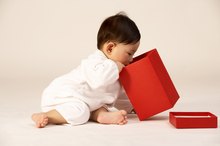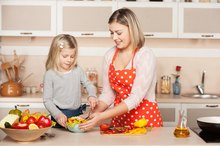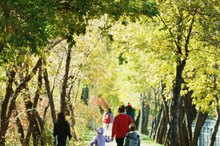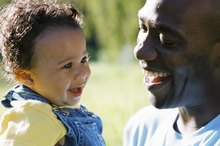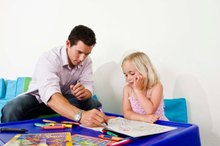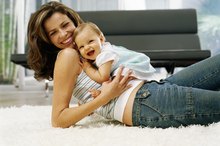Aesthetics Activities for Kids
In order to plan aesthetic activities for kids, you need to start with a definition of "aesthetic." Bennyé D. Austring and Merete C. Sørensen of the University College Sjælland in Denmark define aesthetic learning for children as anything that is artistic, tasteful and sensual. Mary Mayesky, author of "Early Childhood Education," includes in her book chapters on art, puppetry, drama, creative dramatics and even creative food projects. Aesthetic learning engages the senses in a memorable and fun way.
Getting Ready
Learning that is artistic, imaginative, tasteful and sensual can get messy. Prepare an area that can withstand paint, glue and amateur theatricals. Use drop cloths, paint aprons and any other preventative gear needed. Set up some ground rules so that the aesthetic play is fun for everyone. Provide materials that spark imagination such as:
- old newspapers
- string
- odd socks
- dress-up clothing
- paper
- scissors
- glue
- paint
If you have an appropriate space, even include cooking supplies.
- Learning that is artistic, imaginative, tasteful and sensual can get messy.
- Prepare an area that can withstand paint, glue and amateur theatricals.
Edible Creation
Playing Activities for Infants 12-24 Months Old
Learn More
Pudding paint, peanut butter play dough and even traditional rolled cookies or candy making can provide a satisfying creative platform. Pudding paint is made using regular pudding mix. It works well for the age 3 and younger crowd, but can be enjoyed by older kids as well. Edible play dough can be made by mixing peanut butter with powdered milk and powdered sugar. Experiment with using smooth or crunchy peanut butter. The sugar can be left out if it is a concern. Rolled cookie dough can be cut in a variety of shapes and decorated after baking. Young cooks can finish off the experience by eating their creations.
- Pudding paint, peanut butter play dough and even traditional rolled cookies or candy making can provide a satisfying creative platform.
- Rolled cookie dough can be cut in a variety of shapes and decorated after baking.
Fine Arts
Although art techniques can be taught, an aesthetic art experience requires giving the child the materials and letting her experiment. Three-dimensional supplies such as paper mache, paper clay and reusable modeling compounds can provide hours of fun and sometimes even astonishing results. The keys to success are good preparation and safety rules.
Drama and Role Play
The Benefits of Cooking With Children
Learn More
From dressing up and playing "pretend" to putting on small stage plays, dramatic expression provides an outlet for emotions and creativity. Tools for dramatic creation might range from a box of old clothing to word processors and even cartoon creation tools such as Xtranormal. Creative dramatics, acting out traditional stories and preparing holiday presentations fall into this category. Finger plays and choral reading are also a part of drama. Each of these activities provides a way to try out emotional expression.
- From dressing up and playing "pretend" to putting on small stage plays, dramatic expression provides an outlet for emotions and creativity.
Music and Dance
From banging on the pots and pans to playing in a youth music group, music is an important part of aesthetics. It can be added to your child's education in a variety of ways. These can include adding tuned musical toys to preschool play supplies, such as xylophones and small keyboards, having a supply of recorded music selections for listening and providing a place to move to the music. For school-age children, adding tonettes, English flutes or recorders, and similar pre-band instruments with easy instruction may spark a later interest in music production.
- From banging on the pots and pans to playing in a youth music group, music is an important part of aesthetics.
- These can include adding tuned musical toys to preschool play supplies, such as xylophones and small keyboards, having a supply of recorded music selections for listening and providing a place to move to the music.
Related Articles
Writer Bio
Daisy Peasblossom Fernchild has been writing for over 50 years. Her first online publication was a poem entitled "Safe," published in 2008. Her articles specialize in animals, handcrafts and sustainable living. Fernchild has a Bachelor of Science in education and a Master of Arts in library science.
